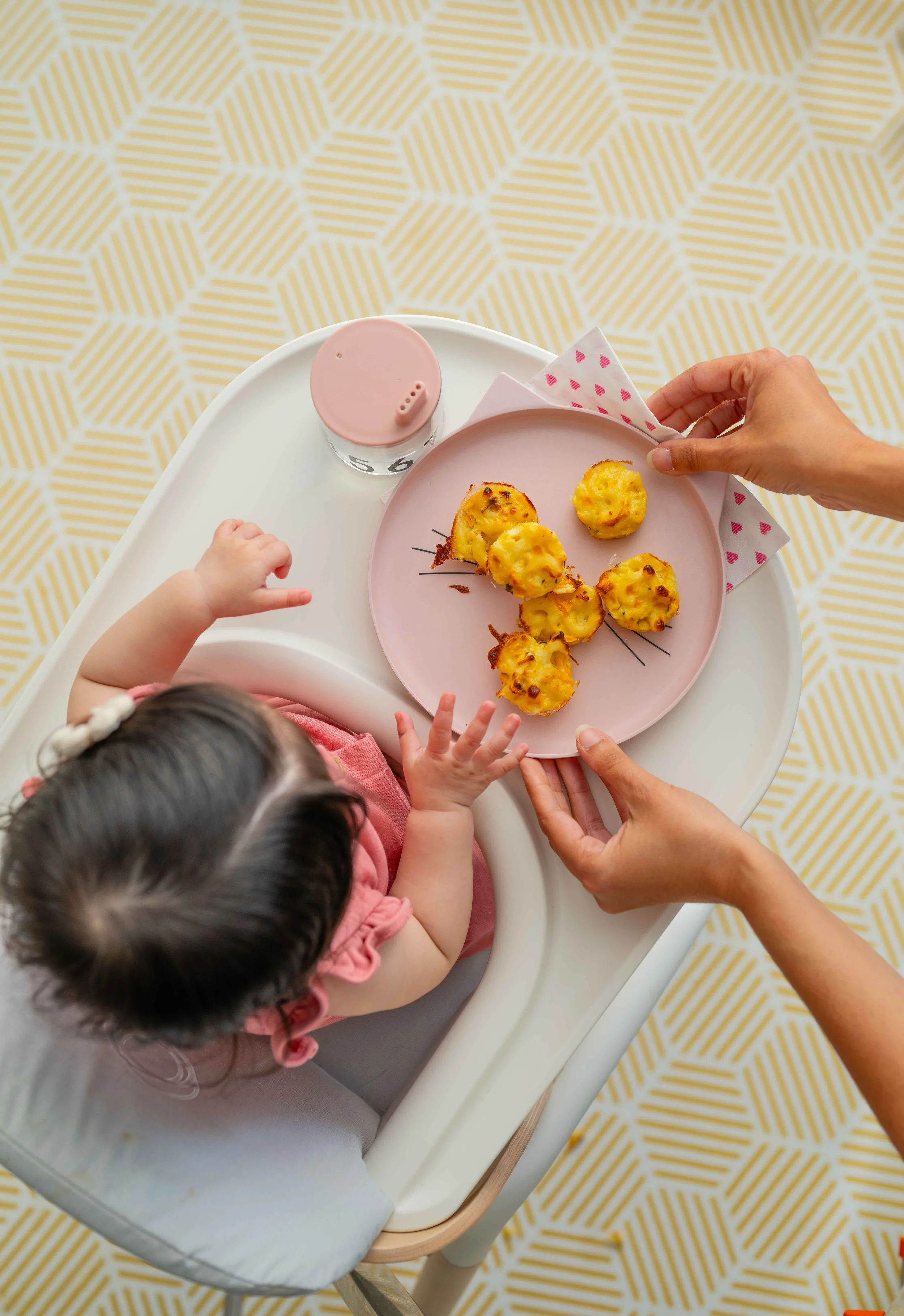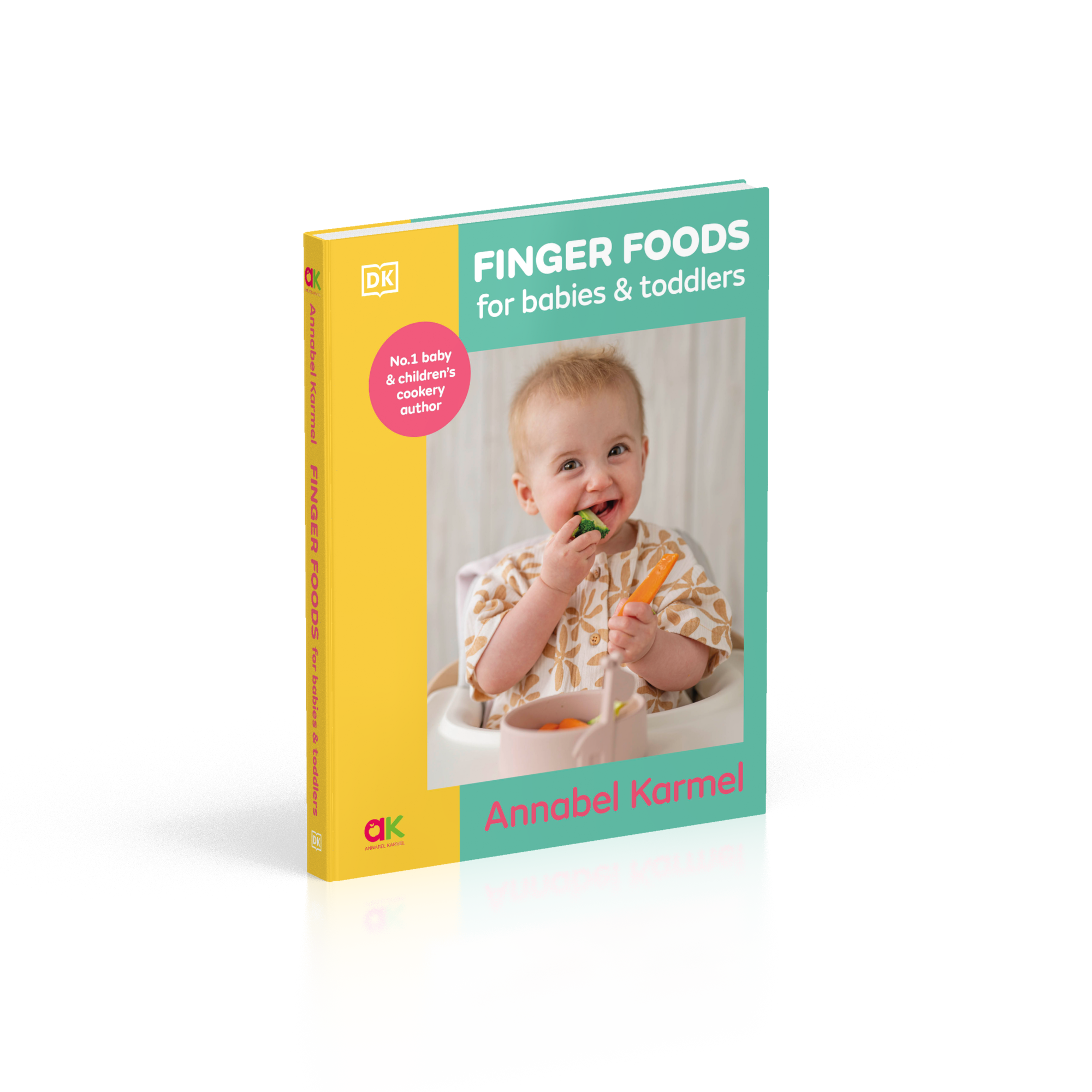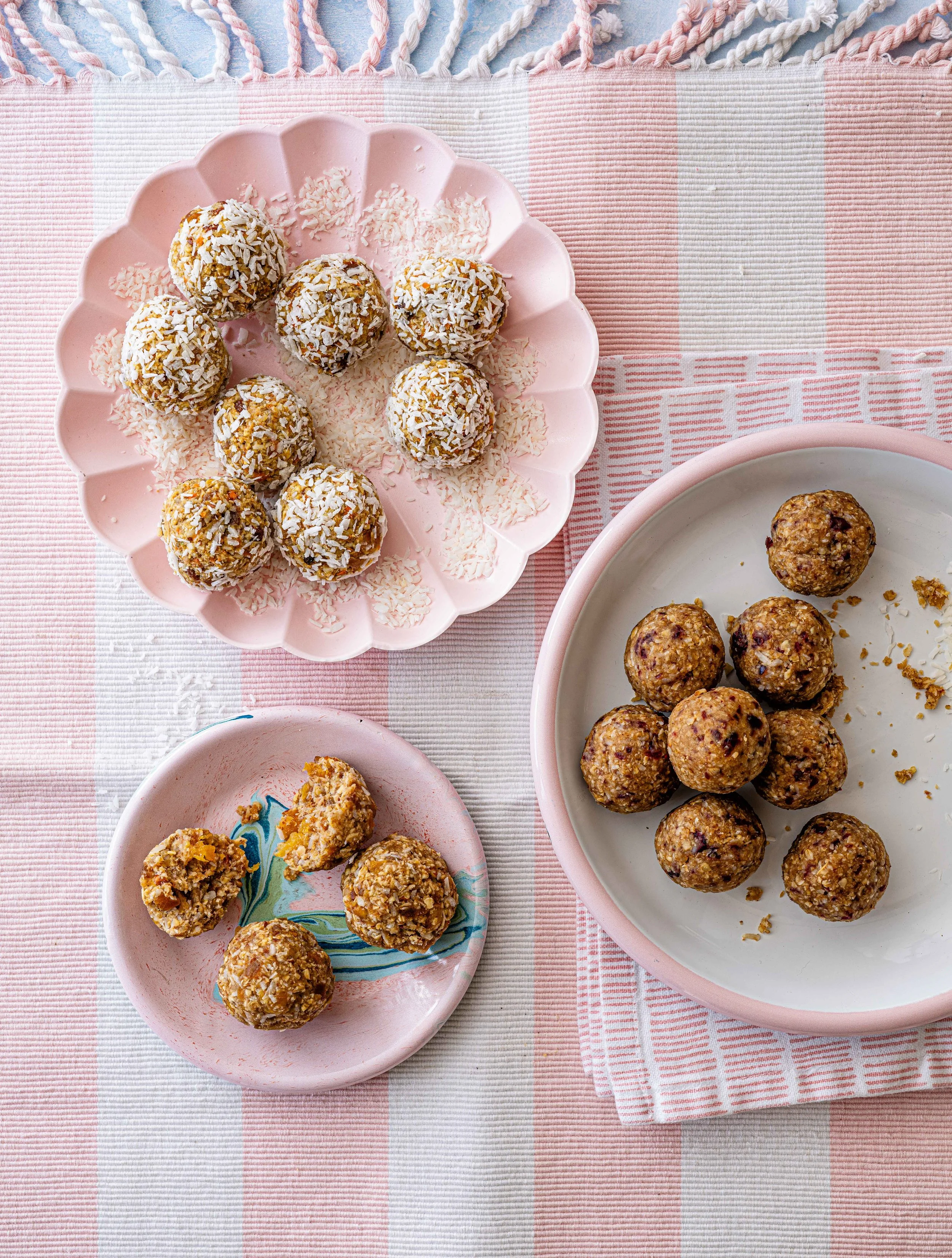Ten minutes with Annabel Karmel
1. Your new book, Finger Foods, emphasizes the importance of self-feeding. Why should parents focus on this aspect of weaning?
Finger foods are such an important part of a baby and toddler’s nutrition and development. Soft finger foods can be offered from six months and if developmentally ready I highly recommend doing so as babies can learn a lot from handling food; from getting to grips with different shapes, sizes, sounds, weights as well as tastes and textures. Regularly handling foods encourages independence and offers and hand-to-eye coordination practice. It gives them confidence in their own abilities as they discover things for themselves. And mealtimes become a social occasion. When baby is eating bits of what you’re having, they feel included and will mimic and copy you.
2. You've mentioned that involving children in meal preparation can encourage them to try new foods. What are some practical ways parents can engage their toddlers in the kitchen?
My children joined me in the kitchen from a very young age and every Friday they would make the supper for the family. It’s a great way to teach them how to cook and about different foods, where they come from and how to handle utensils sensibly.
Yes, it’s messy business and they may lose interest halfway through but involving them in the process of cooking a meal is a wonderful thing. Not only is it quality time spent together but the planning and preparation of a meal can stimulate a child’s appetite and encourage them to try foods they may have turned their nose up at before.
My top 3 tips for cooking with kids:
1. Keep it simple
Children (especially toddlers) have short attention spans, so start with recipes that are extra easy and provide a result reasonably quickly.
It can be as simple as stamping out sandwich shapes or make your own mini savoury muffins to have for lunch – you can add whatever veg you like such as sweetcorn, spinach, courgette or carrot. They will be having fun helping to stir and mix and lay out muffin cases that they will be more inclined to add in some veggies (and eat the end result!)
Homemade oaty energy balls are also a good option as they are quick and super simple. They will enjoy blending and rolling to create their healthy morning or afternoon snack. I’ve got lots of healthy snack ideas and cooking with the kids favourites on my recipe app!
2. Introduce bowls of toppings!
Little ones like to add different toppings to meals. So task them with creating animal faces on their bowl of morning porridge, with lots of healthy cut-up fruit, or try some homemade pizzas with lots of different veggies to hand to sprinkle on top – why not make monster Pizzas or funny faces!
3. Offer them the cooking power hour!
Have a shelf with some colourful cookbooks or find some inspiring recipe websites to scroll through with them. Ask your child to pick a few recipes that they like the look of and sound of. Kids are more likely to try something new if they see a picture that looks good to them. Also, by allowing your child to select recipes, they will gain a sense of empowerment from helping you plan a meal and begin to understand the cooking prep and process.
3. The concept of baby-led weaning has gained popularity. What are your thoughts on combining different weaning methods
You don’t have to choose one method. Giving purées when your baby is ready for first foods (particularly if slightly earlier than six months), with the introduction of finger foods and family meals from six months is a fantastic flexible option. Not every baby’s self-feeding skills are fine-tuned enough at the very start of weaning to be able to pick up food and take it to their mouth, which is an important time to be introducing nutrient-rich foods which contain iron.
This is where some form of pureeing or mashing of nutrient iron-rich food such as chicken, fish, meat lentils or pulses becomes important. Quite simply, some babies do develop more slowly than others, so they need help in eating those important nutrient-rich foods that they cannot feed themselves.
What’s important is that there is no right or wrong! Some babies thrive on purées, others on finger foods and yet some on both so be guided by their developmental signs.
4. Presentation seems to play a role in children's willingness to try new foods. Do you have any helpful tips for parents to easily introduce at home?
It can be tough going trying to get children to try new foods (and particularly those greens they think they “don’t like” so it can help to serve them in a slightly new way to make certain veggies exciting and interesting.
Here are simple tricks to up the greens appeal!
Courgette spaghetti (aka courgetti!)
Toddlers will love to help and watch courgettes transform into wiggly worm spaghetti!
Broccoli trees
Why not up the fun factor (without going to unnecessary lengths) and serve a side of broccoli florets as broccoli ‘trees’ in a fun setting with animal figurines for kids to pick and add to their plate. Both the act of being to help themselves and the excitement of the meal setting might encourage them to give their greens a go!
Monster dip
Children often like to eat with their fingers (and dunk and dip!) so why not make your very own fun monster green dip such as spinach hummus, guacamole or bean and spinach pesto. Serve with slices of pitta and a crudité platter – use as many different veggies as you can and then get ready to dip dip dip!
Broccoli pizza
This is a fabulous ‘fast food’ swap. Who would imagine that grated broccoli could make a tasty base for a pizza? Make a quick homemade tomato sauce and then simply add your little one’s favourite pizza toppings to keep the takeaway at bay. Check out the Broccoli Pizza on my app.
Kale crisps
Kale is a culinary superhero, packed full of essential nutrients and vitamins including iron and vitamin K. Get creative with cooking methods and bake these nutritious leafy greens in the oven with a little olive oil and a sprinkling of seasoning for a healthy alternative to a packet of crisps. This also works well with carrots, sweet potato and parsnip.
Courgette fries
Does your little one love chips? Hmmmm thought so! Courgette ‘fries’ are a tasty alternative to the classic side of chips and a great way to encourage kids to eat their greens.
5. Nutrition guidelines can vary and sometimes be conflicting. How do you ensure that your recipes in Finger Foods meet current nutritional standards while still being appealing to children?
My new book is not only packed with over 100 nutritious, delicious recipes but it also has the very latest advice on how to safely serve finger foods to babies from the very start of weaning. So, whether your baby is 6 months, 9 months or 12 months, I cover individual foods and how to prepare them so that they are safe for your little food explorers.
As well as those first foods, I’ve also included useful and practical advice on how and when your baby should progress, moving through a variety of critical nutrients including iron, essential omega 3 fatty acids and high protein foods. I also take you through how and when to introduce foods of different shapes, sizes and firmness depending on your baby’s age and development.
I always try to make sure my recipes are balanced and packed with nutrition – in one very delicious mouthful! They contain what your growing baby needs. And, I rigorously test my recipes on my team of mini taste-testers! I also think that one of the best bits about this book is that grown-ups will love the recipes too.




